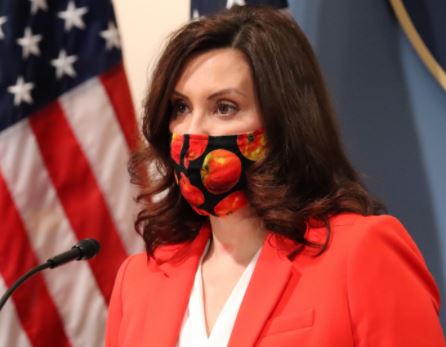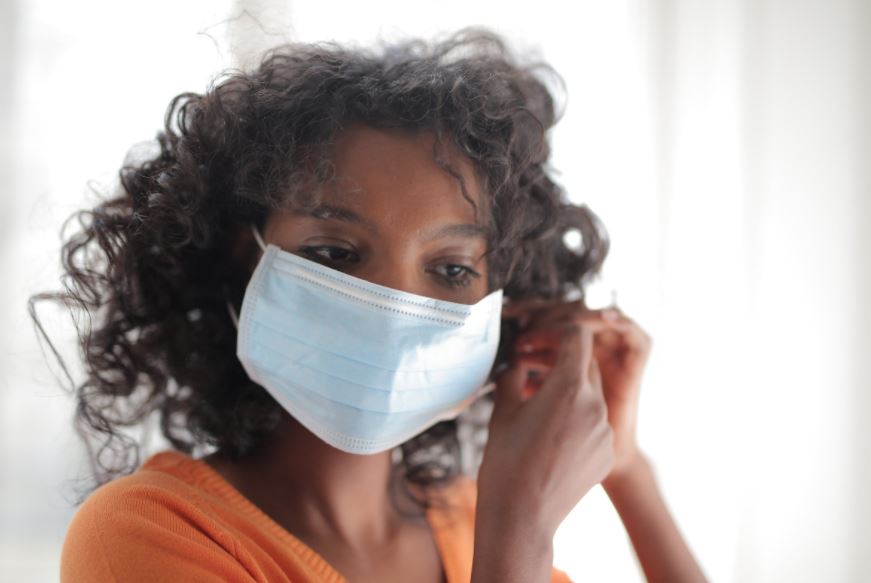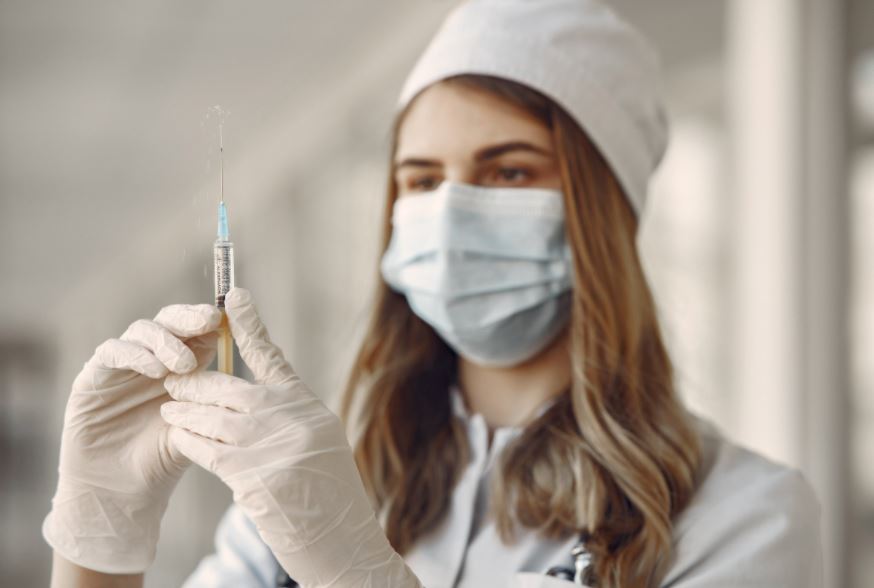DNR: fish kills common during spring thaw
 |
||||
– DNR News – |
||||
|
 |
||||
– DNR News – |
||||
|

 |
| Greetings,
Want to know the state of play on the next COVID relief package that is working its way through Congress? By the end of the week, the House is scheduled to vote on another round of COVID relief. In addition to providing much needed funding for vaccine manufacturing and distribution, this bill will provide another round of direct, $1,400 stimulus payments for those who qualify, and prioritize small businesses by continuing the Paycheck Protection Program and establishing a dedicated restaurant relief fund. The bill will also extend unemployment benefits through August, provide more funding for schools so they can reopen safely, and even help combat childhood poverty by temporarily expanding the Child Tax Credit. As COVID caused our state and local governments to go without the revenue they normally depend on, the need for federal aid is something I’ve been hearing about from both Republican and Democratic mayors in our district. This bill also includes an estimated $5.7 billion for our state and $4.4 billion for our county, city and township governments –– to help our state and local governments keep basic services going, prevent our firefighters, police, first responders and sanitation workers from getting pink slips, and help put us on good footing toward long-term recovery. And as a new member of the House Veterans Affairs Committee, our committee worked on the part of the legislation that would impact our veterans. This includes assistance for unemployed veterans, providing funding for the Veterans Health Administration, and waiving copayments for medical care for veterans during the pandemic. Michiganders need COVID relief that will supercharge distribution of the vaccine, get more help to workers, businesses, and nonprofits, to not only get Michigan through the next couple of months, but to support our state’s economy in the long term. Although I would have preferred a bipartisan agreement on this latest round of relief, we have to meet the COVID threat with the response it deserves. That means passing an additional relief bill, even if it’s not perfect. Elissa
Elissa Slotkin |

Click link below:
https://www.youtube.com/watch?v=Zi5hG987gRw

|

Staff working with immunization providers to improve submission of race data for all vaccines administered, Michiganders urged to fill out race information on forms.
FOR IMMEDIATE RELEASE
February 23, 2021
Contact: Lynn Sutfin, 517-241-2112
LANSING, MICH. Several initiatives to improve access to the safe and effective COVID-19 vaccine and ensure equity when it comes to protection from the virus have been announced by the Michigan Department of Health and Human Services (MDHHS) during the past couple weeks. Today, MDHHS posted race data on the COVID-19 Vaccine Dashboard to help track the effects of those efforts and to provide additional information about vaccinations in Michigan.
“Ensuring those who are most vulnerable are protected by the safe and effective COVID-19 vaccine is a high priority for Michigan,” said Dr. Joneigh Khaldun, chief medical executive and chief deputy for health. “Black and Brown communities have been disproportionately affected by the virus,and improving the race and ethnicity data being collected for vaccinations is critical for ensuring the equitable administration of the vaccine. We will use this data to continue to drive our strategy towards making sure everyone has equitable access to the vaccines.”
MDHHS is following the Centers for Disease Control and Prevention (CDC) recommendations for prioritization of distribution and administration of COVID-19 vaccines for adults. This resulted in vaccinations starting with healthcare workers and staff and patients at long-term care facilities in December. Additional groups, which include individuals ages 65 years or older and some essential frontline workers became eligible in January.
According to data reported as of Feb. 22, 1,252,497 Michigan residents have received at least one dose of vaccine and 547,163 of those individuals do not have race information recorded. Only 56% of reported COVID-19 vaccine doses have race data recorded, a number MDHHS is actively working to improve. Race data collected over the vaccine implementation period shows of those vaccinated:
A direct entry tool is now live and allows this information to be entered directly into Michigan Care Improvement Registry (MCIR) and immunization providers across the state are asked to submit race data for all vaccines administered. Before the rollout of the COVID-19 vaccine, race and ethnicity information could not be submitted as a data field to MCIR. The database collects and consolidates immunization information from multiple providers into a comprehensive immunization record allowing providers to view up-to-date patient immunization history. Currently, 85% of the race and ethnicity data being reported to MCIR comes from electronic medical records.
“We urge Michiganders to fill out race data questions on forms when they get their vaccine,” said Khaldun. “Knowing this information helps guide the state’s strategy and allows us to address any gaps as we move forward getting Michiganders protected from the virus.”
The state recently launched a COVID-19 vaccination strategy to get 70% of Michiganders age 16 and older vaccinated as quickly as possible. The strategy is being guided by the following guiding principles:
As part of this strategy, a new pilot program was launched to help remove vaccine barriers for Michiganders 60 and older who live in communities with high Social Vulnerability Index (SVI) and high COVID-19 mortality rates.
In addition, 40 federally qualified health centers across the state have started to receive vaccine allocations to help vaccinate individuals age 65 and older. These community health centers are located in medically underserved areas to provide high-quality, affordable and comprehensive medical services to everyone – regardless of who they are, where they come from or their ability to pay.
As demonstrated in today’s data, the percent of each population that is vaccinated varies by race. White Michiganders having the highest initiation and completion rates (7.9% and 4.7%), followed by American Indian or Alaskan Native (5.4% and 2.8%, respectively), Asian, Native Hawaiian or Pacific Islanders (5.0% and 3.6%) and Black or African American residents (4.1% and 1.6%). Whites are about twice as likely to be vaccinated as Blacks in Michigan, similar to currently available data from Bloomberg Vaccine Tracker. Ethnicity data is not being reported at this time as only 30% of records contain this information.
Overall coverage rates have also been added to the dashboard, both for the state and by county. Currently, 15.1% of Michiganders have initiated vaccination and 8% have completed both doses.
The cumulative COVID-19 case rate has been 40% higher for Black Michiganders than white residents and the death rate for Black residents has been over three times the rate in white residents. The percent of vaccinated people who are Black has more than tripled between the first three weeks and the last week of vaccination (0.5% to 3.8%), but the proportion of vaccinated adults 16 and older who are Black is far lower than the proportion of Black residents in Michigan.
According to research, 66% of Michiganders are likely or very likely to get the COVID-19 vaccine and 34% would like to get it as soon as possible. However, there are disparities when it comes to who is likely to get the vaccine with 47% of white Michiganders very likely to get the vaccine versus 25% of Black Michiganders.
MDHHS launched a statewide paid media campaign in January to inform Michiganders about the safe and effective COVID-19 vaccine in response to research about attitudes toward the vaccine and to build vaccine confidence among Michigan residents. The campaign was developed after conducting a statewide survey and six focus groups among key target audiences, including African American, Caucasian, Hispanic and Arab-American adults. The campaign includes television, connected TV, radio, streaming audio, YouTube, search, print in minority publications, social media and digital media.
The most recent vaccine prioritization guidance can be found on Michigan’s COVID-19 website.
Information around this outbreak is changing rapidly. The latest information is available at Michigan.gov/Coronavirus and CDC.gov/Coronavirus.
To learn more about the COVID-19 vaccine, visit Michigan.gov/COVIDVaccine.

Applications due March 1 from eligible providers that aim to remove barriers to safe and effective COVID-19 vaccine for state’s most vulnerable ages 60 and up
FOR IMMEDIATE RELEASE
February 23, 2021
Contact: Lynn Sutfin, 517-241-2112
LANSING, MICH. The Michigan Department of Health and Human Services (MDHHS) and the Protect Michigan Commission announce details for a new program to help enhance the state’s vaccine equity strategy. Michigan providers that are federally enrolled to administer COVID-19 vaccines are encouraged to apply by Monday, March 1 if they can help remove barriers for those ages 60 and up who are most vulnerable to the effects of the virus. Applicants accepted into the community outreach pilot project can request up to 2,500 doses.
“We want to make sure all Michiganders have access to the safe and effective vaccines as we work toward our goal of vaccinating 70% of Michiganders age 16 and up as quickly as possible,” said Dr. Joneigh Khaldun, chief medical executive and chief deputy for health. “We are working hard to eliminate any barriers to vaccine access. Your ability to get a vaccine should not be impacted by whether you are in a rural or urban part of the state, are lower income, or don’t have access to a car, a computer, the Internet or don’t speak English. This is what equity means.”
The goal of the new pilot program is to help remove barriers to vaccine access for Michiganders 60 and older who live in communities with high Social Vulnerability Index (SVI) and high COVID-19 mortality rates. SVI is a tool that uses census data to identify places where a community may have more difficulty preventing human suffering and financial loss in a disaster. It assesses the extent that 15 known indicators are present within a community based on socioeconomic status, family composition and disability, minority status and language, housing and transportation.
Providers are encouraged to apply who are already federally approved to administer the COVID-19 vaccines and can successfully manage the vaccine including storage, identifying a method for second doses, and entering doses administered into the Michigan Care Improvement Registry (MCIR) within 24 hours. Applicants will help to identify the barriers in their communities and the specific strategies they will take to address those barriers, including, but not limited to:
Applicants are also encouraged to highlight strong partnerships with community-based organizations, as well as demonstrate their ability to effectively reach out to their most vulnerable residents over the age of 60.
The application letters submitted will identify specific strategies that can be implemented as soon as the provider is awarded a vaccine allocation. Applications must be emailed by 5 p.m., Monday, March 1. An external review panel will complete the review of the applications and select awardees by Monday, March 8. The intent is to have the vaccine doses to the providers chosen for the pilot program no later than Wednesday, March 10. The vaccine doses must be administered within two weeks of receipt. At that time, MDHHS will review the success of the pilot.
“With this community outreach pilot project, we want to increase the vaccination rate of individuals who are most at risk of negative COVID-19 outcomes and to identify innovative practices for effective vaccination strategies for vulnerable communities,” Khaldun said. “We will consider continuing the program based on the availability of the vaccine and the success of the pilot in achieving our goals to remove barriers.”
Questions about the application should be submitted to MDHHS-VaccineOutreach@michigan.gov. The application will be no longer than three pages, as well as include a list of partners and two letters of support from that list of partners.
MDHHS announced the state’s strategy to get 70% of Michiganders age 16 and older vaccinated as quickly as possible at the end of January. The strategy is being guided by the following principles:
The most recent vaccine prioritization guidance can be found on Michigan’s COVID-19 website.
Information around this outbreak is changing rapidly. The latest information is available at Michigan.gov/Coronavirus and CDC.gov/Coronavirus.
To learn more about the COVID-19 vaccine, visit Michigan.gov/COVIDVaccine.